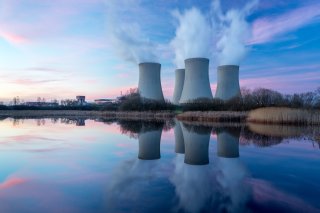Jeff Luse

While originally projected to come online in 2016 or 2017, Vogtle Unit 3 has run over time and over budget due largely to outdated regulations and inefficient licensing requirements. Unfortunately, the challenges Vogtle faced have become the status quo for the nuclear industry in the United States, hampering our ability to bring reliable nuclear energy to the grid. To reverse this trend, lawmakers must modernize regulations and implement a policy framework that supports innovation and deployment.
An oft-cited criticism of nuclear power is that power plant construction is expensive. While some of these delays can be attributed to human error and poor project management, a far greater portion of these costs resulted from increased regulations legislated in the 1970s and 1980s. Over this time, the cost of building nuclear power plants increased by nearly 19 percent annually as power plants hired more engineers and managers to accommodate increasing regulations and inspections from the Nuclear Regulatory Commission (NRC). Safety changes after the accident at Three Mile Island alone—which led to precisely zero deaths, injuries, or direct health-related effects—were responsible for 10 percent of increased labor costs and 15 percent of new material costs required for new plants after 1979.
Material regulations such as quality assurance (QA) and quality control (QC) rules—which require plant operators to purchase “nuclear grade” versions of materials like steel and cement—are yet another cause of bloated project budgets. In some instances, nuclear-grade components are 50 times more expensive than their average industrial counterparts. That might be worth it if nuclear-grade cement was stronger or safer than standard market-grade cement, but it isn’t. In many cases, the materials are the same but require far more paperwork to comply with QA and QC standards, which leads to increased costs and less market competition.
And while operators should prioritize safety and efficiency, it is important to note that nuclear power is among the safest energy sources on the market, responsible for fewer deaths per terawatt hour than wind, geothermal, or hydropower.
Permitting and licensing issues are yet more hurdles that delay projects and increase costs. Last year Georgia Southern had to file a license amendment and pay $30 million just to brace a shaky pipe. The “project” delayed opening by a month. These episodes are just a few examples of the byzantine bureaucracy developers must navigate to bring a nuclear project to fruition.
There are several steps that Congress can take to address these barriers that artificially inflate the cost of nuclear energy. First, it must pass meaningful permitting reform to benefit all energy, conservation, and infrastructure projects. While the Fiscal Responsibility Act included critical first steps to reducing NEPA-related backlogs, such as implementing page limits for Environmental Impact Statements and Environmental Assessments, it failed to address litigation that delays much-needed development. Under the current statute of limitations, a plaintiff can introduce a NEPA-related lawsuit up to six years after a project has completed necessary environmental reviews. This must be far shorter if the U.S. wants to rapidly build out critical energy and transmission infrastructure.
Second, lawmakers must hold the NRC responsible for its outdated regulatory structure. Encouragingly, the recently Senate-passed ADVANCE Act authorizes a study to examine the cost of QA and QC requirements and how developers can incorporate standard materials in future power plant construction. While important to lowering construction costs across the board, there are still several inefficiencies in the licensing process—including onerous paperwork that increases costs and a regulatory structure that does not accommodate emerging technologies—that the NRC must address. Failing to hold regulators accountable will hurt the current fleet of nuclear power plants and increase costs, disincentivizing investments in small modular and advanced reactors.
The United States can continue to be a leader in nuclear power, but only if the government modernizes its regulations to allow innovators the freedom to innovate. Allowing the inefficiencies and delays that ensnared the Vogtle project to continue will not only impede reductions in carbon emissions but also harm national energy security and reliability for businesses and consumers.
No comments:
Post a Comment